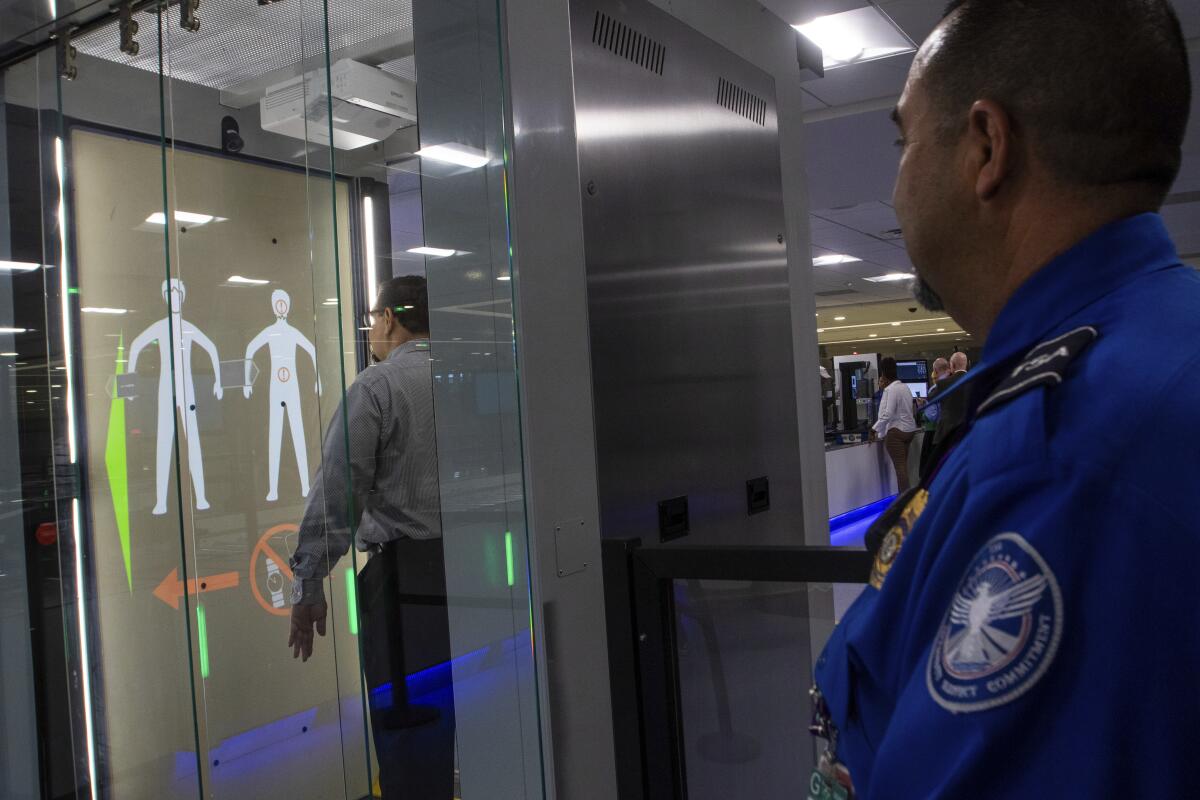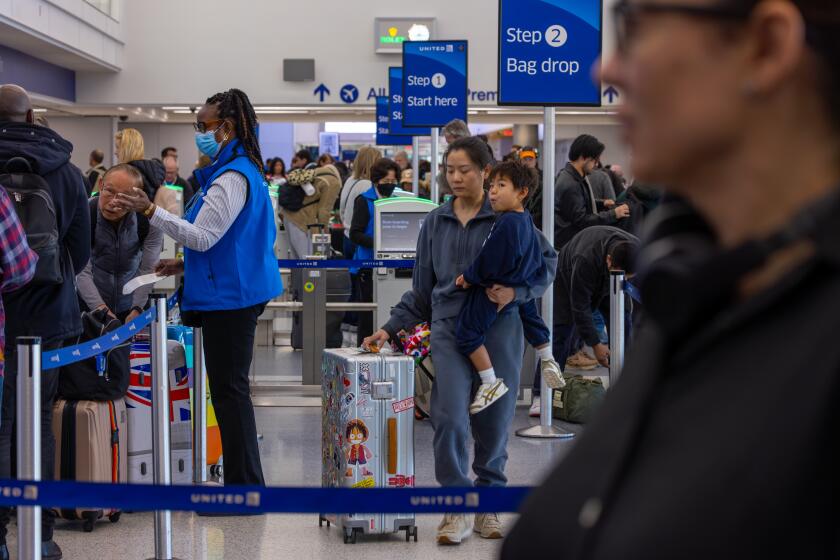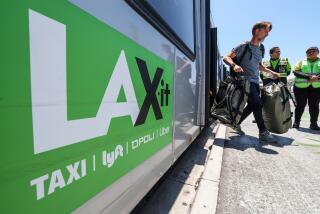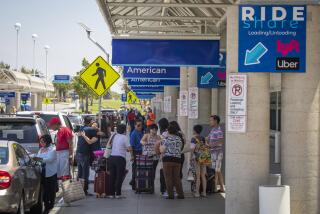Some travelers will be able to screen themselves at security at Las Vegas airport. Here’s how it works

- Share via
Going through airport security can be a soul-sucking experience, which is why many travelers enroll in the TSA PreCheck system to qualify for shorter lines — and the right to keep their belt and shoes on as they go through the body scanner.
Soon, the Transportation Security Administration may lighten the load even further for TSA PreCheck enrollees: by offering them a self-service screening system.
TSA PreCheck passengers at Harry Reid International Airport in Las Vegas will be able to try out the new service in mid-March, when testing begins, according to a Department of Homeland Security news release. The same screening standards and rules required of PreCheck lanes will apply to the self-screening lane.
The goal of the service is to let travelers fix the security issues that would ordinarily require a pat-down or secondary screening by TSA officers. If the system detects a potential issue when the traveler’s body is screened, the traveler will be shown the alarm information and be given a means to correct it, DHS said.
A ticketless traveler from Nashville International Airport landed in LAX, no problem. Now the FBI is investigating how she did it and why.
Originally developed and tested in Arlington, Va., the system has a video monitor that shows step-by-step instructions for the screening. TSA officers will be available to help if needed.
TSA will also collect feedback and data from passengers on the system’s performance, cybersecurity, design, human factors and other variables.
“The number of airline passengers continues to increase year-over-year, creating a need for innovative screening solutions that enhance transportation security and make traveling more efficient,” DHS Undersecretary for Science and Technology Dimitri Kusnezov said in the release.
TSA plans to study the results of the assessment before deploying the system to other airports.
More to Read
Sign up for Essential California
The most important California stories and recommendations in your inbox every morning.
You may occasionally receive promotional content from the Los Angeles Times.












